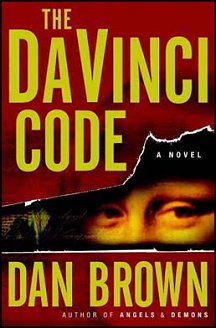Last week I spent over 4 hours putting together an eBay auction presentation. A personal record for me, and if I hadn't had both OCR and voice-recognition software to speed up the process, I'm sure that I would've logged closer to six or seven hours. I spent part of that time reading the contents of one of the items in the auction lot (in this case, a necessary task because it was a one of a kind deal, unknown to virtually any prospective buyer), part of it researching questions that came up during my reading, another part taking and editing 15 pictures; and, finally, there was a 1200+ word description to write, some of which included transcribing over a dozen excerpts. Yesterday, by extreme contrast, I spent an hour and a half on 24 auctions - less than 4 minutes apiece.
It both cases, the time I spent was appropriate. Clearly, there's no one-size-fits-all approach to selling on eBay. Some items can be almost instantly presented with a single picture and one line of text. Others demand several pictures and a more extensive description. A few call for much, much more.
Of course, you can get by with a one-picture/one-line presentation for everything you sell, and many sellers do. You may recall that I discussed one type of seller who does this - the flipper - in issue #13 of the Gold Edition. Flippers believe that they can make up in volume what they lose by using bare-bones presentations. To some extent, no doubt, they do, but overall, if the items they're selling are of a better than average quality, they come out well behind sellers who build well-chosen textual (and photographic) detail into their listings. I confirm this almost every week: I frequently buy inventory from them, then resell it in exactly the same venue - eBay.
Another type of seller (also discussed in #13) is the clueless seller. Clueless sellers may take the minimalist approach because they don't know any better. Or don't feel up to the task of describing something they know little or nothing about. Or assume that buyers will be willing and able to fill in the missing details for themselves - i.e., do the work of researching based on scant information. Sometimes it's almost heartbreaking to watch a poorly-presented book sell for far less than it should, especially when you sense that the seller is struggling to make a go of things and know that an investment of 10 or 15 additional minutes in the presentation would've netted another $50 or $100.
There are a few sellers who overdo it too - build too much labor into something that has low potential - but you can protect yourself against falling into this trap by listing only items that you can be fairly certain will sell for $30, $40 or more. $10 or $20 books should be sent packing to fixed-price venues, where it's rarely necessary to build much labor into anything.
Again, as I did in Part I of this series, I'm going to look at this from the perspective of what the buyer needs to know from the seller. It can be next to nothing or a lot, depending, and here are two examples that will illustrate many of the factors that will point you in one direction or the other. Whatever you do, don't build a presentation on the basis of what's convenient or painless for you. Build it for the buyer. If you believe that accommodating the buyer will require an investment of time that doesn't justify the likely return, then eBay isn't the place to sell what you have. It's time to send it to a fixed- price venue.
Ok, first example. If you have a first printing of The Da Vinci Code - a book that sells on eBay for $100 or more time and time again - you certainly have the luxury of being able to spend some time on a presentation, but it would be foolish to spend more than a few moments on textual content (or a great deal of time on anything overall).

The great majority of buyers could care less if you include, say, a synopsis of the story because this book has such a high profile. Even if fiction has a lower profile, it's rarely productive to summarize the contents, and only then when you've been able to identify a significant flashpoint. Far better to write a line or two of condition notes and issue points and leave it at that, and even that won't be necessary if you've included several photographs that establish both. This is what the buyer wants. This and no more. So what if the entire presentation process only takes a few minutes. Be glad that you can profit so much from so little and move on. There are plenty of books that do require substantial work, some almost too much.
One such book would be (I'm grabbing something at random from an inventory shelf)
Some History of Lawrence County (South Dakota).
Profiles don't get much lower than this. Most local history books have printings in the hundreds, not hundreds of thousands, so it's very unlikely that your buyers will know much, if anything, about their contents going in. Many of them won't even know that the book existed before seeing your presentation. Therefore, it's your job to give them a good idea of what's happening between the covers, both illustratively and textually - and there's a lot happening with this title. 724 pages. Hundreds of photographs.
There are two questions that need to be answered before you fire up the scanner. What kind of information should you include? And how much?


